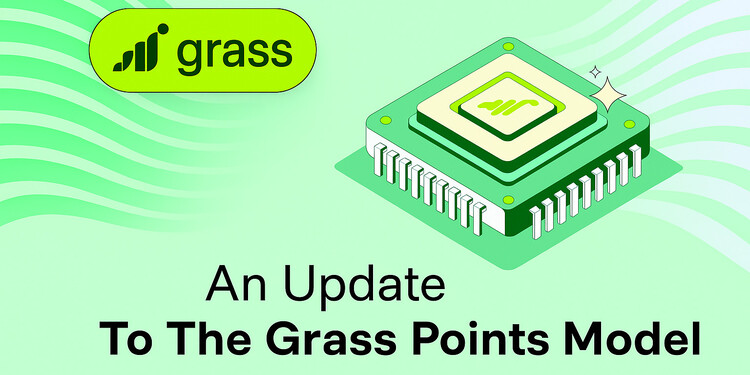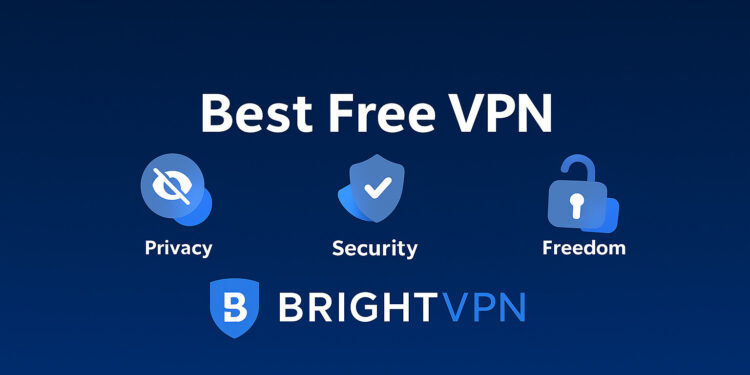Introduction
Grass has officially introduced an updated Points Model to make its reward system more transparent, efficient, and fair for all users. Starting from Epoch 11, this refined model divides Grass Points into two key categories — Uptime Points and Network Points.
The goal of this update is to provide users with a clearer understanding of how their participation and bandwidth usage contribute to the growth of the Grass Network. By defining these two point types, Grass ensures that both connection reliability and active bandwidth usage are recognized and rewarded appropriately.
Grass Points serve as a core mechanism to track user contributions, calculate rewards, and maintain the stability of the decentralized network.
Understanding the Grass Points System
Grass Points are designed to measure how much value each user contributes to the Grass Network. These points help determine reward allocation and form the foundation for the incentive model that powers the entire ecosystem.
The updated system introduces a more detailed and data-driven approach to tracking contributions. Instead of grouping all activity under a single metric, Grass now separates the earning structure into two components:
- Uptime Points — representing the reliability and availability of your connection.
- Network Points — representing the actual utilization of your bandwidth within the network.
This two-part system allows Grass to accurately reward users based on both consistency and contribution depth.
1. Uptime Points
What Are Uptime Points?
Uptime Points are earned when your device is connected to the Grass Network and your bandwidth is available for use. These points reward users who maintain a stable and consistent presence in the network.
Uptime Points are also awarded for community-driven actions such as:
- Referring new users who become active members of the network.
- Reaching specific milestones that reflect ongoing participation and engagement.
In essence, Uptime Points serve as recognition for your reliability — keeping your device online and maintaining a quality connection that strengthens the network’s overall stability.
How Uptime Points Are Calculated
The calculation of Uptime Points is programmatic and based on real-time network monitoring. Each device connected to Grass is periodically checked for uptime and connection quality.
Users accumulate Uptime Points proportionally to the total time their devices remain online and available. Additionally, referral-based uptime from invited users contributes to the referrer’s total points.
For example:
- If your device remains connected for 24 hours, you earn base Uptime Points.
- If a user you referred also stays connected, you receive additional referral uptime rewards.
This dual approach promotes both personal reliability and community expansion.
Why Uptime Points Matter
Uptime Points represent the foundation of participation within the Grass ecosystem. They ensure the network remains stable and that there are always available connections to support public data routing.
By rewarding uptime, Grass encourages users to:
- Keep devices active and reliable.
- Contribute to the resilience of decentralized data access.
- Help scale network coverage across different regions.
These contributions are essential to building a robust and dependable infrastructure that supports the long-term success of the Grass Network.
2. Network Points
What Are Network Points?
Network Points are earned when your bandwidth is actively used by the Grass Network to process and route public web data requests. While Uptime Points recognize availability, Network Points measure actual utilization.
In other words, Uptime Points reward you for being ready, and Network Points reward you when your bandwidth is actually used.
How Network Points Work
Each day, Grass creates a fixed pool of 1,000,000 Network Points to distribute among users. These points are allocated pro rata based on the amount of each user’s bandwidth used by the network.
If your bandwidth is used more frequently to handle web data requests, you receive a higher share of the daily Network Points pool.
For example:
- Suppose the Grass Network routes a total of 100,000 GB of data across 500,000 users in one day.
- If your device contributes 10 GB, that equals 0.01% of the total bandwidth used.
- You would earn approximately 100 Network Points, or 0.01% of the daily 1,000,000 Network Points.
Key Factors Influencing Network Points
Several elements determine how much of your bandwidth is used — and therefore how many Network Points you earn:
1. Market Demand and Geographic Distribution
The Grass Network routes public web data based on regional demand. If there is higher demand for web data in a particular region (e.g., the United States), users in that region are more likely to have their bandwidth utilized more frequently, thus earning more Network Points.
2. Connection Stability and Performance
Your internet quality and stability are crucial. The Grass Network prioritizes reliable, consistent connections to ensure successful data routing. Devices with stable connections, particularly through Grasshopper or the Android App, tend to perform better in network utilization.
3. Historical Usage Patterns
If your connection has been used successfully in recent days, it increases the likelihood of continued usage. The network distributes requests across multiple connections to maintain performance and reliability, meaning consistent contributors may see ongoing rewards.
How to Earn Network Points Efficiently
To maximize your Network Points:
- Keep your device online as much as possible.
- Use stable connections (wired or consistent Wi-Fi).
- Run Grass through official applications like Grasshopper or Android App for optimal uptime.
- Ensure your bandwidth remains available and unrestricted.
No special actions are required beyond maintaining a solid connection. The system automatically measures and rewards your contributions.
3. The Rewards Dashboard
The Rewards Dashboard serves as your central hub for monitoring and analyzing your contributions. It provides a transparent and easy-to-navigate interface to help you understand your progress and performance.
Dashboard Features
- Tiers and Milestones — Track your growth through different contribution levels.
- Referral Activity — Monitor the performance of users you have invited to the network.
- Earning Breakdown — View detailed statistics of both Uptime Points and Network Points.
- Epoch History — Review your point accumulation and network engagement over time.
This updated dashboard now integrates both point categories, giving you a comprehensive overview of your contribution to the Grass Network.

What Users Need to Do
The best part about this update is its simplicity — you don’t need to change anything.
Simply continue to:
- Keep your device connected to the Grass Network.
- Maintain stable uptime.
- Check your progress through the Rewards Dashboard.
Grass automatically tracks your Uptime Points and Network Points, ensuring you receive credit for your participation without any manual actions required.
4. Why This Update Matters
This Points Model Update represents an important step in Grass’s mission to build a transparent, fair, and scalable decentralized infrastructure.
By separating Uptime and Network Points, the system can:
- Better reflect individual contributions.
- Encourage consistent participation.
- Reward active data routing fairly.
The dual structure of the model also enables better analytics, allowing the team and users to monitor network health and resource distribution more effectively.
Ultimately, this enhances both user trust and network efficiency — two key pillars for Grass’s long-term growth.
5. Example Scenario
To illustrate, imagine that in one day, the Grass Network routes 100,000 GB of data across all active participants.
If your device contributed 10 GB, representing 0.01% of total data flow, you would receive roughly 100 Network Points — equivalent to 0.01% of the daily reward pool.
This proportional system ensures fairness and encourages users to keep their connections consistent, contributing to a healthy and scalable network.
6. Legal Disclaimer
Installing or purchasing any Grass-related application — including Grasshopper, Grass for Android, or the desktop extension — does not guarantee rewards.
Network Points are distributed based solely on programmatically verified bandwidth usage. The allocation depends on factors such as:
- Bandwidth quality and stability.
- Connection uptime.
- Network-wide participation and operational requirements.
- External market forces influencing data demand.
Grass cannot guarantee any fixed amount of Network Points or financial return. Rewards depend entirely on your active participation and network demand.
Conclusion
The Grass Points Model Update marks a major step forward in building a transparent and rewarding decentralized data network.
By defining both Uptime Points and Network Points, Grass provides users with a clear, measurable way to understand how their actions strengthen the ecosystem.
This update not only enhances reward fairness but also sets the foundation for a sustainable and scalable infrastructure — powered by real participation and real connectivity.
As Grass continues to evolve, your consistent connection and engagement remain vital to shaping what comes next.
Thank you for being part of the Grass Network.





![Browser Cash [Depin/Node]: Earn Passive Rewards Easily](https://sinhmmo.com/wp-content/uploads/2025/09/Browser-Cash-Depin-Node-350x250.jpg)